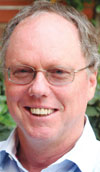
Ancient Latin seems to be far removed from modern day CCTV technology, but as far back as 400 BC the phrase 'Quis custodiet ipsos custodes?' was used by the Roman poet, Juvernal.
Based on writings by the philospher Plato in his discussions on government and morality, the phrase has been various translated as 'Who watches the watchmen?' 'Who watches the watchers?' or 'Who will guard the guards?' (Wikipedia).
Now, the phrase is as relevant as ever in our high-tech society with the scope for 'watching' more pronounced than at any other time in history. Ironically, in a society where the government seems intent on undermining those organisations that can carry out a monitoring role of politicians and officials for potential corruption and abuse of power, the same capabilities can be used more than ever to monitor the public.
Public surveillance has prompted strong emotional reactions in places like the UK and US and various proposals and structures have been put in place to try and ensure that CCTV is used in a moral, socially appropriate, and responsible manner.
One of the questions that arises is just how much and what kinds of issues CCTV operators should be looking at. If the public feel that a range of petty issues are being focused on, there is often a backlash about 'invasive' surveillance monitoring their every move. There is some merit to this argument – should highly expensive equipment funded by taxpayers be used for petty offences. Equally, however, if it is demonstrated that areas are being constantly observed, people tend to generally behave themselves better.
There can be a direct reduction of more serious crime as criminal types stay away or are aware they are in an area that is covered by CCTV and where things are constantly picked up.
A major problem is the potential distraction in looking at the minor and obvious issues. In doing so, operators may well miss more significant issues and major crimes of far more importance to the community. The issue then becomes are CCTV operators watching for the correct things and who makes sure they do this?
'Who watches the watchers' is therefore not only relevant for the public being observed by public surveillance operations. No matter whether CCTV is being done in commercial, industrial or public operations, there should be some kind of ongoing formal monitoring or audit of the effectiveness of the operators and system itself.
From a management point of view, one needs to be aware of what is being monitored and how well it is being done. While many control rooms have a camera installed to allow monitoring of operators, few supervisors or managers actually actively check on what is being assessed. Even fewer call for outside audits or peer reviews to see if the relevance of what is being viewed and recorded is accomplishing management objectives.
To ensure that CCTV schemes are doing what is intended there are a number of measures that have been implemented. These range from:
* Legislation such as privacy and human rights acts, regulation of investigatory powers (eg, RIPA), and access to information among others.
* Professional associations and security bodies.
* Codes of practice for industries and organisations.
* Standards and procedures within CCTV operations.
We all need to make sure that people are not overzealous in their use of CCTV or are using it for other reasons besides those intended. Equally, we should also be concerned that people are fulfilling their roles as much as they can in protecting people and property.
There is a need for a review function and regular audits in any operation against industry standards, and a need for self-monitoring through tiers of operation.
Management and supervisors also need more extensive involvement in checking and discussing monitoring strategies and examining whether operator conduct is in line with these.
Ultimately, no government imposition or internal management function can meet the needs to watch the watchers. Communication of objectives and policy for CCTV, being open to discussion, and allowing for independent or peer review of functions are going to convince people far more that the watchers are doing their job properly.

Dr Craig Donald is a human factors specialist in security and CCTV. He is a director of Leaderware, which provides instruments for the selection of CCTV operators, X-ray screeners and other security personnel in major operations around the world. He also runs CCTV Surveillance Skills and Body Language, and Advanced Surveillance Body Language courses for CCTV operators, supervisors and managers internationally, and consults on CCTV management. He can be contacted on +27 (0)11 787 7811 or [email protected]
| Tel: | +27 11 787 7811 |
| Email: | [email protected] |
| www: | www.leaderware.com |
| Articles: | More information and articles about Leaderware |

© Technews Publishing (Pty) Ltd. | All Rights Reserved.